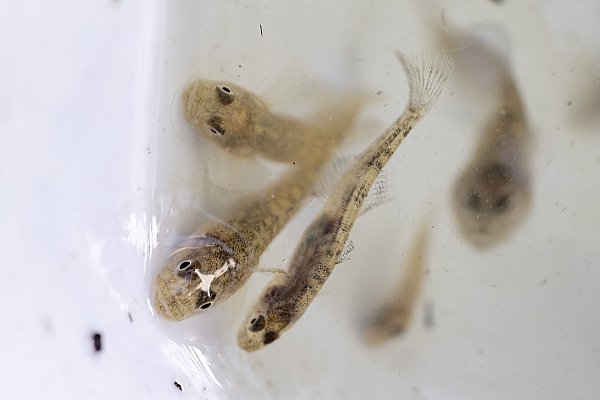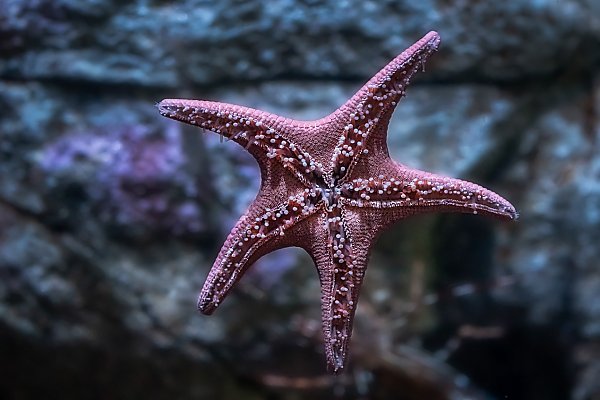Two New Eagle Rays Added to Tropical Reef

Credit: Robin Riggs
October 2, 2018
Two eagle rays, one female and one male, are now on exhibit in the Tropical Reef. This species has a protruding, tapered snout, a dark brown back with white spots, and a long, thin tail. Their underside is white. Their bodies average about 4 to 6.5 feet long, not counting their tail. They are found in tropical and subtropical waters of coastal areas and the open ocean. This species is known to swim near the surface of the water, sometimes porpoising, or leaping, out of the water. They feed on crustaceans, worms, snails, octopuses, and small fish.
There are two species of eagle rays: Aetobatus ocellatus from the Indo-Pacific and Aetobatus narinari from the Caribbean, but there has never been genetic testing done to confirm the species of the eagle rays living in zoos and aquariums. The Aquarium is participating in the Association of Zoos and Aquariums’ species survival plan for eagle rays and will conduct genetic testing to confirm which species we have. This will help build knowledge about eagle rays’ genetic diversity. A. ocellatus is listed as vulnerable on the International Union for Conservation of Nature’s Red List. This species is sometimes trapped in gill nets used for fishing in coastal waters. These rays are also sometimes found in estuaries where pollution can often be a major factor impacting marine life.
Prior to going on exhibit, the rays were held in a behind-the-scenes area for a standard quarantine period, while staff members monitored their diet, growth, and training. They were moved into the Tropical Reef exhibit in early September, where they separated from the other animals for about a week to adjust to their new home before being released into the exhibit on September 18.
Visitors can spot the new rays being fed underwater by divers during shows at the Tropical Reef at 12:15 p.m. and 4:00 p.m. on weekdays and 12:00 p.m. and 4:15 p.m. on weekends.

Credit: Robin Riggs

Credit: Robin Riggs






